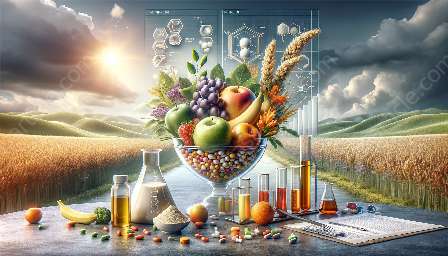The Complex Nature of Lactational Mastitis and Plugged Ducts
Lactational mastitis and plugged ducts are common challenges that can arise during breastfeeding, impacting both the lactating individual and the nursing infant. These issues are interconnected with human lactation and nutrition science, as they involve the physiological processes of milk production, composition, and transfer, as well as dietary and lifestyle factors that influence lactation. This topic cluster delves into the multifaceted aspects of lactational mastitis and plugged ducts, providing comprehensive insights into their causes, symptoms, prevention, and management within the context of human lactation and nutrition science.
Understanding Lactational Mastitis
Lactational mastitis refers to the inflammation of breast tissue, commonly occurring during lactation. It is often associated with bacterial infection, leading to symptoms such as localized breast pain, redness, swelling, and warmth, as well as systemic manifestations like fever and flu-like symptoms. The development of mastitis can disrupt the lactation process and have implications for both maternal and infant health.
The link between human lactation and lactational mastitis is intricate, as the underlying causes often involve milk stasis, inadequate milk removal, breast engorgement, and compromised immune defenses. Nutrition science plays a role in understanding how diet, hydration, and overall health influence the susceptibility to mastitis, as well as the nutritional composition of breast milk and its impact on the infant's well-being.
Causes of Lactational Mastitis
The potential causes of lactational mastitis encompass a range of factors related to milk production, breastfeeding practices, and maternal health:
- Poor milk drainage due to infrequent or incomplete breastfeeding or ineffective milk removal techniques
- Breast engorgement and blocked milk ducts
- Inadequate rest, sleep, and nutrition, leading to compromised immune function
- Damaged or cracked nipples, providing a gateway for bacterial invasion
- Pressure on the breasts from tight clothing or improper use of breast pumps
- Stress and fatigue, impacting the body's ability to ward off infection
Symptoms of Lactational Mastitis
The symptoms of lactational mastitis often include:
- Localized breast pain and tenderness
- Swelling, redness, and warmth in the affected area
- Fever and chills
- Flu-like symptoms, such as body aches and fatigue
- Presence of a breast lump or area of hardness
Prevention and Management of Lactational Mastitis
Preventive measures and strategies for managing lactational mastitis are essential for promoting maternal comfort, sustaining breastfeeding, and safeguarding infant nutrition:
- Establishing proper breastfeeding techniques and ensuring adequate milk removal
- Optimizing maternal nutrition, hydration, and rest to support immune function
- Addressing any breastfeeding issues promptly, such as resolving latch problems or treating damaged nipples
- Seeking timely medical advice if symptoms of mastitis arise, potentially requiring antibiotic therapy
- Utilizing supportive measures, such as warm compresses and gentle breast massage, to alleviate discomfort and aid in milk flow
Understanding Plugged Ducts
Plugged ducts represent another challenge that can emerge during lactation, involving the obstruction of milk flow within a milk duct. This obstruction can lead to localized pain, swelling, and inflammation, impacting both lactation and maternal well-being. The relationship between human lactation and plugged ducts encompasses the intricate dynamics of milk production, milk removal mechanics, and dietary considerations that influence breast health and milk composition.
Causes of Plugged Ducts
The development of plugged ducts is influenced by factors that affect the flow of milk within the breast, including:
- Incomplete milk removal, often linked to infrequent or ineffective breastfeeding or pumping
- Pressure on the milk ducts due to tight clothing or external factors
- Poor breast drainage from irregular feeding patterns or abrupt weaning
- Breast engorgement or changes in milk flow dynamics
Symptoms of Plugged Ducts
The symptoms associated with plugged ducts typically include:
- Localized breast pain and tenderness
- Swelling and redness in the affected area
- Presence of a firm or hard lump in the breast
- Mild systemic symptoms, such as fatigue or malaise
Prevention and Management of Plugged Ducts
Preventive measures and effective management strategies are crucial for addressing plugged ducts and minimizing their impact on lactation and maternal comfort:
- Encouraging adequate and frequent breastfeeding to maintain milk flow and prevent stasis
- Utilizing proper breastfeeding techniques and ensuring effective milk removal
- Addressing any issues with breast drainage or milk flow promptly
- Applying warmth and gentle massage to the affected area to promote milk flow and alleviate discomfort
- Considering dietary factors that may influence breast health, such as hydration and balanced nutrition
Integration with Human Lactation and Nutrition Science
The comprehensive understanding of lactational mastitis and plugged ducts within the context of human lactation and nutrition science underscores the interconnectedness of these issues with maternal health, breast milk composition, and infant nourishment. Nutrition science contributes to the knowledge of optimal dietary patterns and hydration, which can support lactation and maternal immune function, potentially reducing the risk of mastitis and plugged ducts. Furthermore, understanding the impact of these conditions on milk flow and composition is pivotal for ensuring the continued provision of high-quality breast milk for the nursing infant.
By exploring the multifaceted nature of lactational mastitis and plugged ducts in relation to human lactation and nutrition science, individuals involved in lactation support, healthcare, and nutrition can gain valuable insights into promoting maternal well-being, sustaining lactation, and optimizing infant nutrition.

